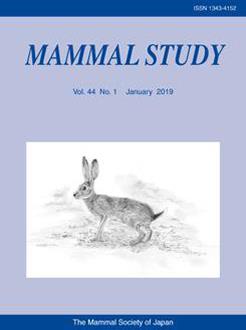The trap-neuter-release method, which has been used to control stray cat populations in many countries, is thought to be more efficient than the trap-removal method because neutered cats returning to their home ranges can prevent the influx of other cats, which would otherwise take advantage of the unoccupied areas. To test territory occupying patterns of stray cats, the present study used radio tracking to estimate the home ranges of the cats living in Mt. Dobong, Korea. Total six cats (three males, three females) were radio tracked for 3–6 months. The mean home range size of the cats was relatively small (17.9–37.9 ha), and the home range sizes of males (21.6–37.9 ha) and females (17.9– 20.9 ha) were not significantly different. The home ranges of both male and female cats overlapped substantially, so that home ranges were not used exclusively at least within a sex. Furthermore, the overlap areas were associated with food-rich locations, such as garbage boxes. Therefore the present study failed to support the hypothesis that the cats would use their home ranges exclusively, thereby suggesting that the efficacy of the trap-neuter-return method should be reconsidered.
How to translate text using browser tools
21 December 2018
Radio-Tracking Survey of Stray Cat Home Range in a Suburban Area: Non-Exclusive Use of Home Ranges in Stray Cats (Felis catus)
Jun-Soo Kim,
Jong-U Kim,
Jong-Hoon Jeon,
Jong Koo Lee,
Woo-Shin Lee
ACCESS THE FULL ARTICLE
<
Previous Article
|

Mammal Study
Vol. 44 • No. 1
January 2019
Vol. 44 • No. 1
January 2019
Home range overlap
stray cat management
trap-neuter-release method
use of home range




